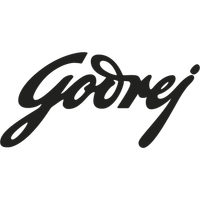
Godrej Consumer Products Ltd
NSE:GODREJCP


| US |

|
Johnson & Johnson
NYSE:JNJ
|
Pharmaceuticals
|
| US |

|
Berkshire Hathaway Inc
NYSE:BRK.A
|
Financial Services
|
| US |

|
Bank of America Corp
NYSE:BAC
|
Banking
|
| US |

|
Mastercard Inc
NYSE:MA
|
Technology
|
| US |

|
UnitedHealth Group Inc
NYSE:UNH
|
Health Care
|
| US |

|
Exxon Mobil Corp
NYSE:XOM
|
Energy
|
| US |

|
Pfizer Inc
NYSE:PFE
|
Pharmaceuticals
|
| US |

|
Palantir Technologies Inc
NYSE:PLTR
|
Technology
|
| US |

|
Nike Inc
NYSE:NKE
|
Textiles, Apparel & Luxury Goods
|
| US |

|
Visa Inc
NYSE:V
|
Technology
|
| CN |

|
Alibaba Group Holding Ltd
NYSE:BABA
|
Retail
|
| US |

|
3M Co
NYSE:MMM
|
Industrial Conglomerates
|
| US |

|
JPMorgan Chase & Co
NYSE:JPM
|
Banking
|
| US |

|
Coca-Cola Co
NYSE:KO
|
Beverages
|
| US |

|
Walmart Inc
NYSE:WMT
|
Retail
|
| US |

|
Verizon Communications Inc
NYSE:VZ
|
Telecommunication
|
Utilize notes to systematically review your investment decisions. By reflecting on past outcomes, you can discern effective strategies and identify those that underperformed. This continuous feedback loop enables you to adapt and refine your approach, optimizing for future success.
Each note serves as a learning point, offering insights into your decision-making processes. Over time, you'll accumulate a personalized database of knowledge, enhancing your ability to make informed decisions quickly and effectively.
With a comprehensive record of your investment history at your fingertips, you can compare current opportunities against past experiences. This not only bolsters your confidence but also ensures that each decision is grounded in a well-documented rationale.
Do you really want to delete this note?
This action cannot be undone.

| 52 Week Range |
1 069.6
1 516.7
|
| Price Target |
|
We'll email you a reminder when the closing price reaches INR.
Choose the stock you wish to monitor with a price alert.

|
Johnson & Johnson
NYSE:JNJ
|
US |

|
Berkshire Hathaway Inc
NYSE:BRK.A
|
US |

|
Bank of America Corp
NYSE:BAC
|
US |

|
Mastercard Inc
NYSE:MA
|
US |

|
UnitedHealth Group Inc
NYSE:UNH
|
US |

|
Exxon Mobil Corp
NYSE:XOM
|
US |

|
Pfizer Inc
NYSE:PFE
|
US |

|
Palantir Technologies Inc
NYSE:PLTR
|
US |

|
Nike Inc
NYSE:NKE
|
US |

|
Visa Inc
NYSE:V
|
US |

|
Alibaba Group Holding Ltd
NYSE:BABA
|
CN |

|
3M Co
NYSE:MMM
|
US |

|
JPMorgan Chase & Co
NYSE:JPM
|
US |

|
Coca-Cola Co
NYSE:KO
|
US |

|
Walmart Inc
NYSE:WMT
|
US |

|
Verizon Communications Inc
NYSE:VZ
|
US |
This alert will be permanently deleted.
 Godrej Consumer Products Ltd
Godrej Consumer Products Ltd
Godrej Consumer Products Ltd
Investor Relations
In the dynamic world of consumer goods, Godrej Consumer Products Ltd. (GCPL) has carved a distinctive niche, balancing heritage with innovation. Emerging from the rich legacy of the Godrej Group, which began its journey more than a century ago, GCPL has become a leader in the home and personal care segment. The company's story is not just about past laurels but about its present endeavors and future aspirations. It operates across three core categories: personal care, home care, and hair care, championing renowned brands such as Cinthol, Good Knight, and Godrej Expert. The brand's success is deeply intertwined with its ability to blend consumer insights with robust research and development, creating products that resonate with the evolving needs of their diverse clientele.
GCPL's business model thrives on a broad spectrum of product offerings, catering to various markets across Asia, Africa, and Latin America. The company's strategy is to harness its deep-rooted understanding of local consumer preferences and to deliver products that are both affordable and of high quality. By leveraging its strong distribution network, strategic marketing, and a commitment to sustainability, GCPL ensures a steady revenue stream that is global in scope yet locally significant. Innovation, operational efficiency, and an unwavering focus on customer satisfaction fuel the engine of GCPL, as it continues to expand its footprint while enhancing its product portfolio to drive growth and profitability in the highly competitive consumer goods sector.

In the dynamic world of consumer goods, Godrej Consumer Products Ltd. (GCPL) has carved a distinctive niche, balancing heritage with innovation. Emerging from the rich legacy of the Godrej Group, which began its journey more than a century ago, GCPL has become a leader in the home and personal care segment. The company's story is not just about past laurels but about its present endeavors and future aspirations. It operates across three core categories: personal care, home care, and hair care, championing renowned brands such as Cinthol, Good Knight, and Godrej Expert. The brand's success is deeply intertwined with its ability to blend consumer insights with robust research and development, creating products that resonate with the evolving needs of their diverse clientele.
GCPL's business model thrives on a broad spectrum of product offerings, catering to various markets across Asia, Africa, and Latin America. The company's strategy is to harness its deep-rooted understanding of local consumer preferences and to deliver products that are both affordable and of high quality. By leveraging its strong distribution network, strategic marketing, and a commitment to sustainability, GCPL ensures a steady revenue stream that is global in scope yet locally significant. Innovation, operational efficiency, and an unwavering focus on customer satisfaction fuel the engine of GCPL, as it continues to expand its footprint while enhancing its product portfolio to drive growth and profitability in the highly competitive consumer goods sector.





























 You don't have any saved screeners yet
You don't have any saved screeners yet
